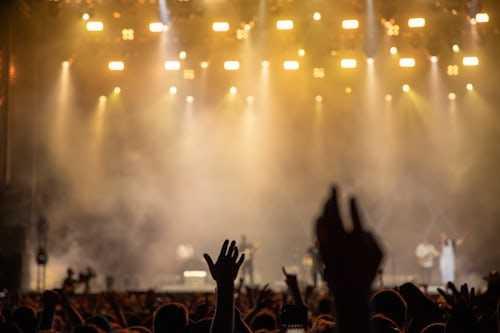Music Synchronizes the Brains of Performers and Their Audience
Curated from: scientificamerican.com
Ideas, facts & insights covering these topics:
6 ideas
·3.17K reads
7
Explore the World's Best Ideas
Join today and uncover 100+ curated journeys from 50+ topics. Unlock access to our mobile app with extensive features.
Performer - audience synchrony
When you are at a concert and you get to the part with a refrain from your favorite song, you are swept up in the music. The performers and audience seem to be moving as one.
Research has shown there is a synchrony that can be seen in the brain activities of the audience and a performer. And the greater the degree of synchrony, the more the audience enjoys the performance.
222
759 reads
Dancing to the same emotions
The synchrony between the brain activity of a performer and his audience shows insights into the nature of musical exchanges: we dance and feel the same emotions together, and our neurons fire together as well. This is especially true when it comes to the more popular performances.
Synchronous brain activity was localized in the left hemisphere of the brain (temporal-parietal junction). This area is important for empathy, the understanding of others’ thoughts and intentions, and verbal working memory used for expressing thought.
208
508 reads
Music and the right hemisphere of the brain
The right brain hemisphere is most often associated with the interpretation of musical melody.
In the right hemisphere, synchronization is localized to areas involved in recognizing musical structure and pattern (the inferior frontal cortex) and interpersonal understanding (the inferior frontal and postcentral cortices).
191
538 reads
Mirror neurons
These are brain cells that are thought to enables a mirroring or internalization of others’ thoughts and actions.
They manage movement and respond to the sight of it, giving rise to the notion that their activity during passive observation is a silent rehearsal for when they become engaged in active movement.
187
466 reads
Measuring synchronized brain responses
Synchronized brain responses among music listeners have been measured by functional magnetic resonance imaging (fMRI) in some studies, while other researchers have examined the coordinated actions of performers by tracking the electrical activities of their brain using electroencephalography.
170
386 reads
Music promotes positive social behavior
The observed degree of synchronization between the performer and audience was connected to the enjoyment of the music.
This provides a powerful means by which music promotes positive social behavior. Music commands greater attention when it is pleasant, which could contribute to one’s feeling of being swept away when listening to a favorite piece.
192
518 reads
IDEAS CURATED BY
Alana F.'s ideas are part of this journey:
Learn more about personaldevelopment with this collection
How to write clearly and concisely
How to use proper grammar and punctuation
How to structure a business document
Related collections
Similar ideas
4 ideas
Moving in Sync Creates Surprising Social Bonds among People
scientificamerican.com
5 ideas
When Our Gaze Is a Physical Force
scientificamerican.com
1 idea
What are the effects of alcohol on the brain?
scientificamerican.com
Read & Learn
20x Faster
without
deepstash
with
deepstash
with
deepstash
Personalized microlearning
—
100+ Learning Journeys
—
Access to 200,000+ ideas
—
Access to the mobile app
—
Unlimited idea saving
—
—
Unlimited history
—
—
Unlimited listening to ideas
—
—
Downloading & offline access
—
—
Supercharge your mind with one idea per day
Enter your email and spend 1 minute every day to learn something new.
I agree to receive email updates

